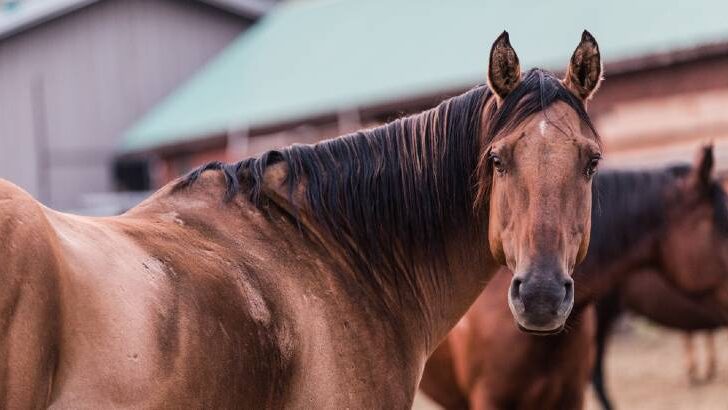Affiliate Disclaimer
As an Amazon Associate I earn from qualifying purchases. It helps me keep the website going. Thank you for your support.
There is a lot to think about if you are considering owning or leasing a horse. One of the first things to think about is where you will keep your horse. When you pay a fee to a stable owner for your horse to live there, this is called boarding. There are different types of horse boarding arrangements. Here is an overview of the options available, so you can consider what will suit you and your horse.
The two main types of horse boarding include stall board and pasture board. With stall boarding, the horse lives some or most of their time in a stall. Whereas in pasture boarding they live outside more or less all the time. In addition to this, you can choose how much help you get from barn staff in the day-to-day care of your horse.
If you have plenty of land on your property, then keeping your horse at home may be an option. But if not, like many horse owners, you are going to have to find a place for your horse to live. So, let’s take a closer look at the above options…
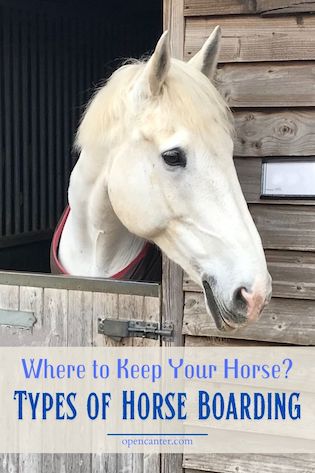
Types of Horse Boarding
The different types of horse boarding fall into two broad categories, namely, ‘stall board’ and ‘pasture board’.
Stall Boarding
This is when your horse has their own stall at the stable, and the stall is essentially the horse’s home. The horse will spend either all or part of their time in the stall.
The amount of time your horse spends in the stall is something that you can negotiate with the stable owner.
Perhaps you want your horse to be outside in the pasture during the day and brought in at night time. Alternatively, your horse could spend half the day in the pasture and the rest of the day inside. Equally some owners prefer their horses to spend most of their time in the stall.
Some show horses are very used to spending a lot of time in their stall and feel most comfortable there.
It’s worth remembering that not all stables will have a large pasture space that can be used for extended turn out. If you want your horse to spend time in the pasture during the day, this is something to look out for.
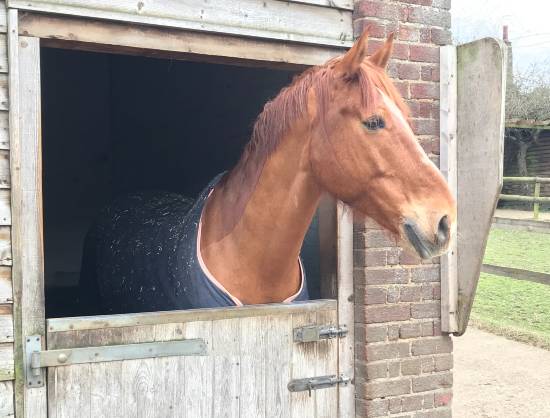
Pasture Boarding
Also known as field board or outdoor boarding is when the horse lives out in the pasture 24/7. The stable owner will provide adequate shelter for the horses. This is normally a covered open barn where the horses can wander in and out as they please.
It’s important that there is some sort of shelter available for horses that live out. Shelter protects them from the elements, including rain, wind, and sun.
You may also hear another term which is ‘paddock boarding’. This is essentially the same thing as pasture boarding, it’s just that some regions use the word paddock and some don’t.
In Australia, a paddock is a grassy field that is usually over an acre in size. By contrast, a paddock in the UK is an enclosed area that usually has a dirt or sandy floor. Paddock is a less common term in the US, though it is still used in some areas.
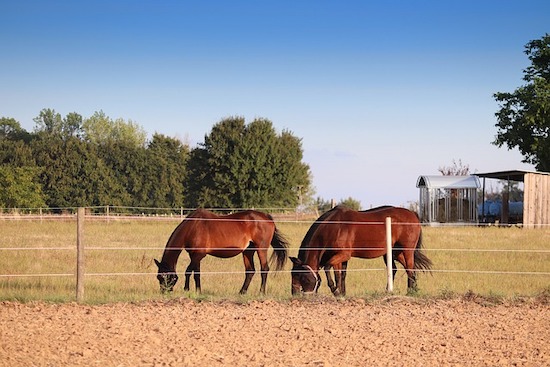
Which is Best? Stall Board or Pasture Board?
As a human, it’s easy to assume that horses will be happier in a nice comfy cozy stall. After all, in a stall, they are warm and dry and have a nice bed of shavings or straw.
But this is not necessarily the case. In the wild horses spend their lives in herds wandering around the terrain looking for forage. This is their natural environment.
A muddy windy field may look inhospitable to us, but to many horses, it is where they are happiest. That being said, not all horses prefer to spend their time turned out. It depends on their temperament, and it also depends upon what they are used to.
If your horse is used to spending a lot of time in the stall, they may find it stressful and strange to be turned out for extended periods. Many horses are more at home in a stall if that is what they are used to.
When choosing between the different types of boarding available, you need to think about what your horse is used to. If you want to make a change and start turning your horse out more, you need to do this gradually.
Equally, if you want your horse to spend more time in the stall, this will take a bit of adjustment too. You can’t just take a horse that’s used to living outdoors and put them in a stable 24/7. It’s likely that they would be very unhappy at a sudden change.
The Pros and Cons of Different Types of Horse Boarding
It’s not a black-and-white answer as to which is better. Both have pros and cons and here are some of the advantages and disadvantages of both…
Stall Boarding – The Pros
Here are some of the advantages of the stall board option:
1) Monitoring Your Horse
It’s easier to keep your horse under a watchful eye when they are in the stall. This is useful if your horse has medical issues that need to be monitored. It also makes it easier to give them any medication regularly.
2) Special Diets
Horses with particular dietary requirements can benefit from being in a stall. When horses are out in the field it can be hard to monitor what they have eaten and how much. Other horses might steal their feed. Equally, your horse may be helping itself to another horse’s meal too. You can control this variable more easily if your horse is indoors.
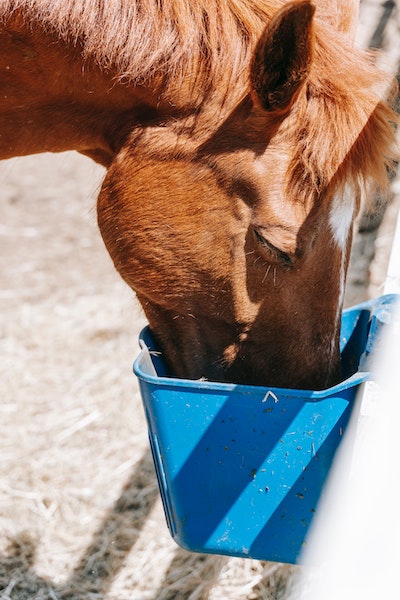
3) Older and Vulnerable Horses
This is one of the reasons why older horses can benefit from being stabled too. Older horses are often slower to eat than the rest of the herd. This makes them vulnerable to their food being poached by other more dominant horses. Alpha horses can sometimes bully older horses and take their food.
4) Saving Time
Some horses do not like being brought in from the field. This means that you may spend time wandering around the field after your horse, trying to get the halter on. Keeping your horse in a stall can save you from going through this daily charade.
5) Less Time Grooming
Horses like to roll, and most horses like to roll in mud. If your horse is stabled, you will spend less time brushing and hosing down your horse’s coat.
6) Protecting Your Horse from the Elements
Horses are hardy, and they don’t mind adverse weather conditions in the way that humans do. Nevertheless, it can be reassuring for you to know that your horse is protected in the freezing winter or the scorching sun.
Stall Boarding – The Cons
Here are some of the disadvantages of stall boarding for horses.
1)The Expense
Keeping your horse in a stall is more costly than having your horse live out. This is partly because running and maintaining stalls is more expensive for the stable owner.
Exactly how much stall boarding costs depends on what is included in the contract that you sign with the stable. It’s fair to say that stall boarding is more expensive. The price can range between $200 and $700 a month depending on what’s included.
2) Some Horses Get Bored and Stressed
As mentioned earlier, a horse’s natural lifestyle in the wild is to be wandering in herds. This gives them variety and stimulus that is lacking in a stall. Some horses find this stressful, and the boredom of standing in a small space can lead them to develop stable vices.
Vices include stereotypic behavior such as windsucking, crib biting, stall walking (box walking), and weaving. Once these behaviors become a habit, they can be very hard to break.
The boredom factor can be addressed to an extent by buying your horse toys specifically designed to occupy them in the stall. These toys can be effective and keep your horse busy. However, there are a few things that these toys don’t combat. And the first of these is the issue of loneliness.
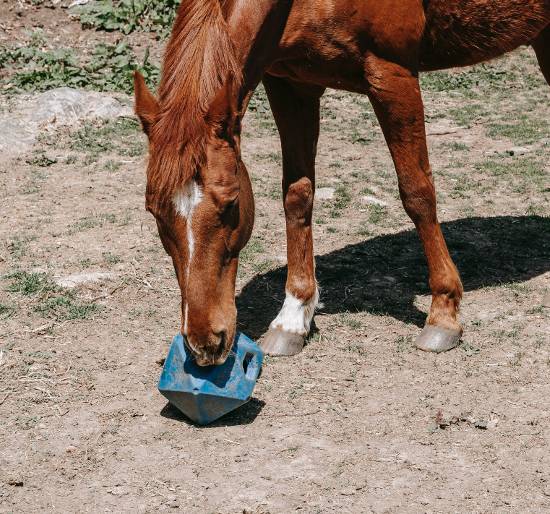
3) Isolation
Horses are very social animals that like to congregate with one another. In herds, part of this congregation is to do with cultivating a feeling of safety for the members. But it also has to do with socializing.
Horses in stables aren’t able to socialize in the same way that they do in the herd. They may have a neighbor in the next stall. But this isn’t quite the same as being able to hang out and play in the way that they would in the field.
The expression ‘horseplay’ became part of our everyday language for a reason. Horses do love to ‘horse around’ with each other. This can be missing for horses who are in the stall for most of their day.
4) Exercise
Another issue that isn’t addressed by box toys is that even with the distraction of toys, being in a stall is sedentary. Your horse is standing still for long periods of time, rather than wandering or running in the pasture.
This means that you will need to ride and/or exercise your horse more. That’s fine if you want to ride your horse every day. Perhaps that’s your plan anyway. But it’s a factor to consider if you don’t have time to ride every day.
Another problem that can arise is that older horses that are standing still in a stable for long periods can stiffen up. Older horses need to move to keep their joints mobile. So, whilst there are benefits from an older horse being in a stall, it can come at a price.
And this is not the only health issue that can arise from being kept in a stall for long chunks of time. Other problems are associated with stall life, including the following:
5) Soft Hooves
Horses can develop soft hooves from standing on stall shavings or straw all day. In the wild, horses’ hooves adapt to rough terrain and become hardy and ideally adapted to roaming. Hooves that aren’t challenged to toughen up can become soft and weak.
6) Respiratory Issues
Poorly ventilated stalls are associated with equine breathing problems. Most stalls these days are designed with ventilation in mind to avoid these issues. Nevertheless, it’s something to be aware of when you are assessing a potential stable for your horse.
Pasture Boarding – The Pros
So, having sized up the pros and cons of stall boarding, let’s take a look at pasture boarding.
1) Having a Happy Horse
As well as being happier, outdoor boarding can be a healthier option for your horse. A horse’s digestive system is designed so that they graze throughout the day. They have small stomachs that need a continual supply of forage.
The simplest way to guarantee that they can graze on demand is that they have access to pasture. This can help prevent them from developing colic.
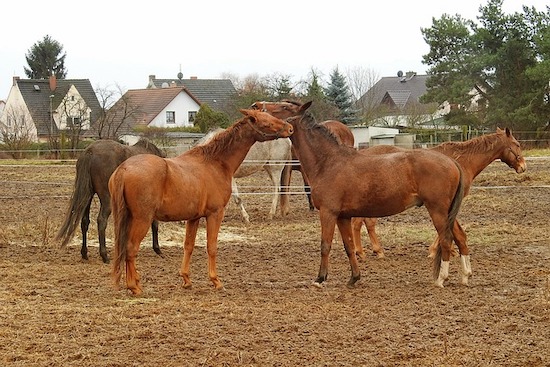
2) Natural Exercise
In the field, your horse will naturally be getting more exercise. This means there isn’t quite so much pressure on you if you don’t have time to ride now and again.
3) Relaxation
Because horses are naturally herd animals, they feel most at ease with each other. Often a horse that has found its place in the herd will feel safe enough to truly relax.
4) Less Boredom and Stress
Horses in a pasture are less inclined to rely on vices to pass the time of day. Some horses that have a very established vice, may carry on doing it when they are turned out. An example of this is the horse who carries on crib biting on a pasture fence post when they are outdoors.
But often times vices will improve with increased turn out time.
5) It Is Less Costly
Another appealing factor for many owners is that pasture board is usually quite a bit cheaper than stall boarding. The average price for pasture boarding is between $200 and $400 a month.
The lower price of pasture boarding is a reflection of the fact that it’s easier for the stable owner to maintain a pasture than a stall.
Pasture Boarding – The Cons
In spite of the plus points of pasture boarding, there are some disadvantages too. And here are some of them…
1) Time Spent Catching Your Horse
Some horses are a breeze to bring in from the field. Other horses can make the process more awkward and time-consuming. If you are on a tight time schedule this can be frustrating as you wander around the paddock after an errant horse.
A related issue is that horses can become what is known as ‘herd bound’. This means that they get extremely attached to another member or members of the herd. When a horse is herd bound they can be very reluctant to leave their buddies.
I’ve seen a herd board horse that didn’t want to be separated from his friends barge out of his stall door. He then jumped over the gate on a pasture to get back to the herd.
2) Accidents Can Happen
One of the benefits of pasture boarding is that it’s closer to the horse’s natural environment. But this brings some element of risks. Horses can get into fights. Sometimes these are play fights in which the horses are letting off steam and bonding. But they can also be quite aggressive and serious.
Horses can get injured in the field from being kicked and bitten by their herd mates. Simply cantering around a pasture can cause unfortunate leg injuries.
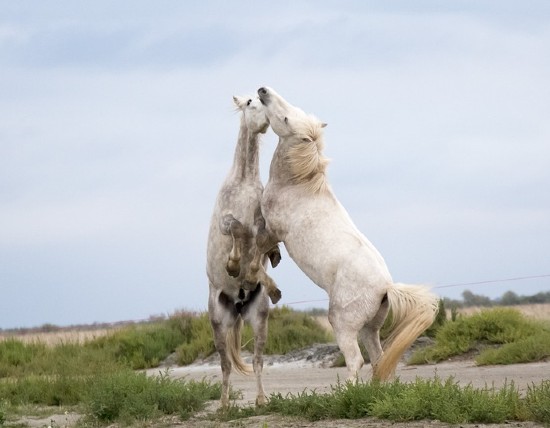
3) Monitoring Your Horses Food Intake
It’s a lot harder to know how much food your horse has eaten when they are being fed outdoors. Part of the issue is that a dominant horse can often eat the lion’s share of the food. Horses lower down the pecking order get what is left after the alpha horse is done.
If your horse is dominant, you might find their waistline expanding from the food they are plundering. Equally, if your horse is lower down on the chain you may find it hard to maintain their weight when they are on pasture board.
One solution to this is to bring your horse in at feed times. If you are lucky, your stable will have feed stalls where your horse can eat in peace and quiet. After eating the horses are then turned out again.
4) Mud and Worms – Gross
The reality of living in a field is that your horse will come into contact with a lot of mud and dirt. Mud is a grooming issue, in that you will spend more time cleaning your horse down.
But mud can also be a health issue too. Horses that spend a lot of time standing in mud can develop foot issues like mud fever. Mud fever consists of sores and scabs on the horse’s legs, often caused by bacteria that thrive in wet mud.
In addition to this, horses can get worms from grazing close to where they poop. Droppings in a stall are cleaned up every day. This is not the case in the pasture and feces is an ideal environment for parasites to multiply.
What About The Best of Both Worlds?
You don’t have to be restricted to the two extremes of either living in or living out. Most stables will be flexible and will agree to a mixture of these two types of horse boarding.
It may suit your horse to be stabled at night time, and out during the day. Or alternatively, you may want your horse to be stabled for part of the day and turned out for the rest of the day.
You may want to go for the most economical option for you. But you will have to make your decision based on your horse’s preferences too. If you buy a horse that is used to spending a lot of time in a stall, he may be very stressed out if you turn him out in a pasture and wander off for the day.
When you are buying or leasing your horse, get plenty of information from the current owner about what your horse is used to.
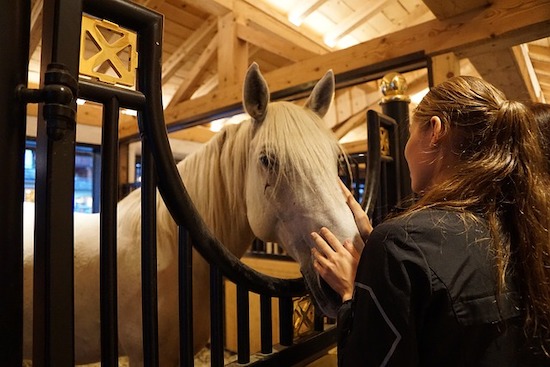
Types of Horse Boarding Packages
A ‘boarding package’ refers to how much the barn staff at a stable will be doing to look after your horse. These are sometimes called care packages. Most stables will offer different levels of care. These levels range from the staff doing practically everything to care for your horse, to doing very little.
The packages specify what the barn staff will do in terms of looking after your horse. And likewise, they lay out what you need to do yourself for the horse. Whether your horse lives in a stall or outdoors, these different levels of care will apply.
Almost all stables will have a contract that states clearly what they are responsible for and what you are responsible for. This is a financial contract in that you pay the stable a monthly fee, and in return, they look after your horse.
Look carefully at the contract and be clear about what you are getting for the fee. Otherwise, additional expenses can quickly add up, and you can end up spending more money than you expected.
Here are some of the different types of horse boarding packages often offered by stables. Exactly what is included in a contract will vary from stable to stable. So, do be sure to double-check with each stable you approach. It’s best not to assume that something such as hay or grain is included.
1) Full Board
This is when the barn staff does almost everything for you. It’s likely to include the following:
- Ensuring your horse is fed and watered
- Mucking out your horse’s stall
- Turning your horse out and bringing them in
- It may include blanketing your horse
- Some stables may include grooming and exercising your horse too
- The owner is usually expected to arrange and be present for farrier and vet visits
Full Board – Cost
The cost of full boarding will vary depending on exactly what is included in the contract. Also, full boarding doesn’t necessarily mean stall boarding. A horse that lives out can also be on full board. So, that is a factor that will affect cost too.
Prices will also vary depending on where you are located and how fancy the stable is. That being said, prices for full boarding will usually range from $400-700 a month.
Full Board Pros
Full board is a popular option for horse owners with limited time. They can show up to the stables and ride their horse knowing that the horse’s basic needs have been taken care of.
If you are busy, and you have the money, then full board may be the only way you can fit having a horse into your life.
Full Board Cons
Some riders feel that having a horse on full board stops them from bonding fully with their horse. You are just one of many people caring for your horse, and that special bond can be harder to cultivate.
A related issue is that your horse is being looked after by barn staff who may have different levels of experience and patience. It doesn’t take much for some intelligent horses to make learned associations.
Let’s say a busy member of the barn staff accidentally hits your horse in the eye with a halter as they are putting it on. This can be enough to make some sensitive horse’s head shy. If you are relying on others to look after your horse, you have much less control over how your horse is treated.
2) Partial Board
The next type of boarding for horses is partial boarding. This will often include the following:
- Provision of shelter, either a stall or a shelter in the pasture
- Your horse will be fed and watered during the day
- Turning out
Partial Board – Cost
This option is a little cheaper than full board and is usually in the region of $250-400 a month. Again, this price range depends on what exactly is included in the contract and on the area.
Partial Board – Pros
- This is a great option for many owners. You will need to go to the stables once a day to muck out the stall and groom and exercise your horse. However, you don’t have to trek down there twice a day to feed your horse and turn them out.
- You get to spend time with your horse every day. This will help with bonding, and also help you be tuned in to any issues that may come up for your horse. These issues may be health-related, behavioral, or to do with their general schooling.
Partial Board – Cons
- Visiting the stable every day is still a big time commitment that you need to be aware of before buying a horse.
- It is still a relatively expensive way to board your horse.
Luckily there are more economical options available. So, let’s take a look at those now…
3) Self-Care Boarding (Also known as DIY Boarding)
As the name suggests, self-care or DIY boarding is when you as the owner do everything yourself.
The stable provides a place for your horse to live. This can either be a stall or a pasture. But either way, all aspects of the horse’s care are your responsibility.
This option will require that you are able to go to the stable at least twice a day to do the following:
- Feed and water your horse
- Mucking out the stall
- Turning out and bringing your horse in
- Grooming your horse
- Exercising your horse
- Put the blanket on or take it off depending on the weather
- Buying your own grain and hay
This is a big time commitment, but it is great if you want a very hands-on relationship with your horse.
The other advantage of the self-care option is the price…
Self-Care Boarding – Cost
This is definitely one of the cheaper options when it comes to boarding a horse. Usually, the price of self-care boarding will be between $150 and 300 a month.

4) Alternative Types of Horse Boarding
The most common types of horse boarding, are full, partial, and self-care. However, there are variations of these arrangements that can work very well. Here are two other options…
Cooperative Boarding
With cooperative boarding, you do some work for the stables in exchange for a reduced monthly fee. There are many jobs around the yard that need doing, including mucking out, feeding the horses, grooming, and general stable duties.
If you are prepared to muck in and help out, then the stable owner some stable owners will offer you a reduced boarding fee.
In order for an arrangement like this to work, you would need to agree upfront with the owner about how much each job you do is worth. You would also need to keep a record of all the tasks that you have done.
Keeping a good record will ensure that both you and the yard owner are getting a fair deal.
Training Board
One of the more exclusive types of horse boarding is called ‘training board’. It also includes training sessions for your horse with one of the experience barn staff or riding instructors.
It can also include a riding lesson for you with your horse. The number of training sessions offered depends on the riding stable and will affect the fee.
This is a good option if you have the money and you want to bring your horse on with an experienced rider.
Loaning Out Your Horse
If you are stabling your horse at a riding school, you may be able to get a reduced boarding fee if you let the school use your horse for student lessons.
In the UK this arrangement is called a ‘working livery’. The owner agrees that the horse can be used for a certain number of hours a week in the riding school.
This is a common arrangement in the UK, and most riding schools will have working livery horses. It’s less common in the US but is still an option that some stables will offer.
Final Thoughts
As you will see, there are a number of types of horse boarding to choose from. Whenever you are considering a stable it’s important to visit the yard in person and take a look around. Does the yard look well-kept? Do the horses look happy and healthy? Talk to other boarders and see if they are happy with the setup. They will give you the best idea of whether you’d be happy to board your horse there.

